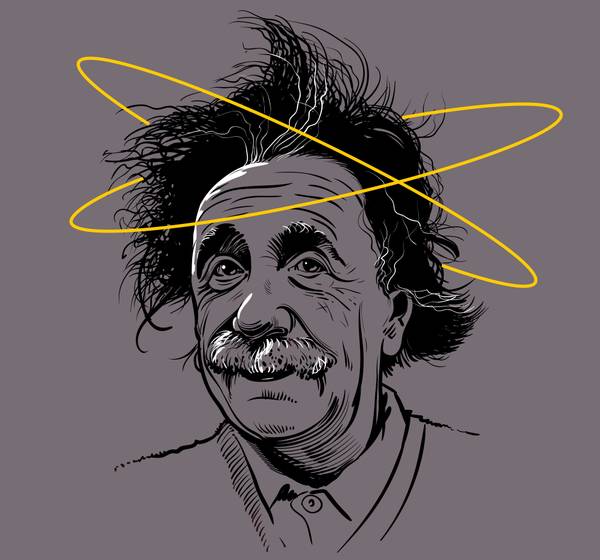The Las Vegas Valley is full of creative thinkers and new ideas. Attorneys involved in protecting those ideas estimate that as many as 1 million new concepts for products and services hit the Las Vegas market annually, and thousands are eventually issued government-approved protection as “intellectual property.”
Las Vegas attorney Clyde DeWitt spent the past four decades working to protect such intellectual property. He practiced in Chicago and LA before moving to the Valley to join Gentile Cristalli Miller Armeni Savarese firm as of counsel. While more than 90 percent of intellectual property lawsuits are settled before they make it through the court system, DeWitt has participated in several trials in his decades of representing clients.
“Patents, trademarks and protecting intellectual property are becoming bigger and bigger,” DeWitt said. “In fact, some people and businesses are completely built around that.”
To protect their new ideas and to avoid facing litigation, DeWitt suggested Las Vegans take one of four routes:
Americans applied for more than 520,000 patents and 936,000 trademarks in 2016, the latest year of available data, according to the United Nations’ World Intellectual Property Organization. About 144,000 of those patents were granted, and 177,000 of the trademarks were registered. With more than 2.7 million patents in force, the U.S. has the most active patents of any country in the world.
Patent
Protects a new invention, usually of a product, device, or process. Patents are exclusively governed by federal law and must be registered with the United States Patent Office. After an inventor applies for a patent, the office reviews the application and will either deny it or, after an opportunity for public comment, approve it. Patents give the inventor exclusive rights to the invention for 20 years. A patent application will be denied if the office finds that the invention wasn’t new or wasn’t useful.
Copyright
For works created after 1978, copyrights last longer than a lifetime—70 years after the owner’s death.
Protects works of art, like photographs, paintings, sculptures, motion pictures, songs, architectural drawings and so on. Since 1978, copyrights have been exclusively federal. A copyright automatically belongs to the author as soon as the work is “fixed in a tangible medium.” However, a copyright cannot be enforced in court until it is registered with the Library of Congress, a simple process that can be completed for a $45 fee.
Patents issued to tech companies (Jan. 1, 2010 to Aug. 1, 2017)
U.S. patent law says the life of a patent can be no longer than 20 years. These companies have thousands of patents:
• IBM: 53,926
• Samsung: 44,301
• Microsoft: 22,304
• Intel: 15,187
• Google: 14,900
• Apple: 13,183
• Amazon: 5,860
• Facebook: 1,690
Trademark
Also known as a service mark, it protects a set of characters or a design that is used to distinguish the product or service of one company from those of all others. Trademarks are protected by both federal and state law. If you begin using a protectable trademark with respect to a product or service, you own the trademark. If you abandon the mark, you lose it. A trademark may not be valid if it is generic, descriptive or has been used by another company in the same market. Almost all trademarks involve interstate commerce, and the safest approach is to file an “intent to use” application with the United States Patent and Trademark Office. Doing so secures the trademark before you spend money using it, and provides an opportunity to ensure that you will not be infringing on an existing trademark. The ™ symbol adjacent to an unregistered trademark notifies the public that you claim it to be your mark. The ® symbol is reserved for marks that have already been granted federal registration.
U.S. Patent Application by Top Fields of Technology (2002-2016)
• Computer tech: 11.5%
• Medical tech: 8.21%
• Pharmaceuticals: 6.25%
• Digital communication: 5.41%
• Electrical machinery, apparatus, energy: 4.38%
• Biotechnology: 3.83%
• Measurement: 3.94%
• Organic fine chemistry: 3.8%
• Semiconductors: 3.38%
• Telecommunications: 3.27%
• Others: 46.03%
Trade Secret
Known as a product of evolving commerce, trade secrets consist of commercially beneficial information that, as the name implies, is a secret, DeWitt says. Trade secrets include customer lists; identity of vendors; pricing arrangements with vendors; and formulas. Protection from using or stealing trade secrets is largely governed by the Uniform Trade Secrets Act, along with the recently enacted federal Defend Trade Secrets Act of 2016. The key to maintaining a trade secret is to keep it as a secret. That means, in the context of a business, having a defined procedure for nondisclosure.

